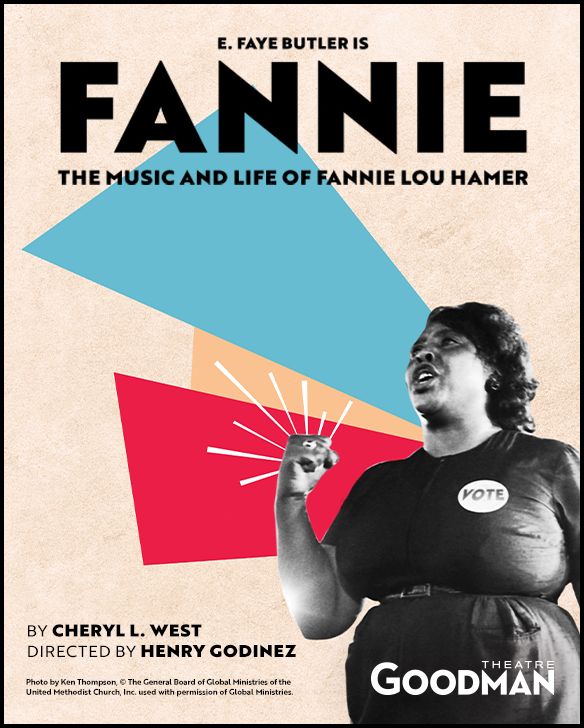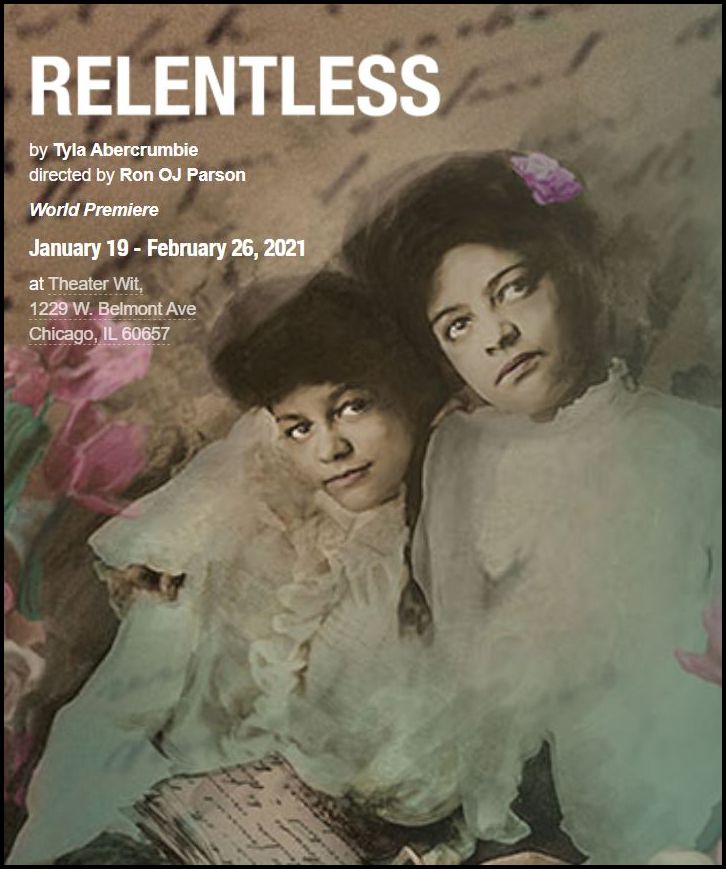
An Interesting Black Spring in the Arts
In the Fall of 2021, all seven new productions opening on Broadway were by black playwrights. This spring, Chicago is flooded with black cultural productions. Goodman Theatre, Steppenwolf Theater, TimeLine Theater, Lyric Opera of Chicago, Chicago Opera Theater – and those are just the ones that I attend. Why this bounty of great and good art?
Black people have always been writing and singing, but few companies were producing Black Art. To garner the substantial funds to produce for storefront theater, much less Chicago Lyric Opera or Broadway, requires a guarantee of success.
Today, that success comes from patrons black and white who want to see the productions and underwriters who want to see these works produced. It’s all about the money. Few are the companies that can afford produce just because “it is the right thing to do.”
In the following productions, both the money and the moral compass are in sync. Several of these are world premieres. It’s likely that you will see them produced in your area. I hope you will attend.
Please note when reading my “reviews” that I am not a trained reviewer. I speak from my heart as a member of the audience. My perspectives are historically based and researched.
Quamino’s Map, Composer Errollyn Wallen, Librettist Deborah Brevoort

Quamino’s Map tells the story of Juba Freeman, a slave musician from South Carolina who fought in our Revolutionary War for the British in exchange for his freedom and passage out of the colonies should the British lose.
As a group they are referred to as Black Loyalists. He had to trade his violin for a berth on the last ship to England and arrived with only the clothes on his back. Juba meets up with his former fellow slave, Quamino, who is now an indentured servant to a cartographer.
In one dramatic hour, Juba meets an elegant upper-class Black woman, Amelia, who collects and dispenses alms. Juba survives in the Mean Streets of London. Amelia actions anguish her family in the fine parlor of her residence.
The opera swings engagingly between these venues – the Mean Streets jazzy and funky with plenty of street people in the chorus, the parlor full-on coloratura solos, duets and quartets. Never the twain shall meet. To obtain the accoutrements of gentility, Juba steals, is caught and arrested. The tone turns gloomy.
This is an opera, so a fairy tale ending is allowed, regardless of how inaccurate.
I enjoyed this short opera. Throughout more modern operatic tone is used. My quibble with the modern tone is when a phrase of singing could end with a solid melodic ring, it usually ends more abruptly and without harmony. But the interspersed time in the Mean Streets and the parlors were fun and familiar. Quamino’s Map is for adventurous opera lovers.
My hope is that seeing this opera will lead people to learn the real history of the Black Loyalists and not settle for the story-book conclusion presented here. Here’s a brief bibliography of readable books telling the story of Black Loyalists.
- Incomparable World by Steven Martin – from which this opera loosely takes its plot.
- Book of Negroes – Lawrence Hill – the history of Black Loyalists who settled in Nova Scotia, Canada.
- Rough Crossings – Simon Schama – the history of Black Loyalists who settled in Freetown, Sierra Leone.
Fire Shut Up in My Bones by Terence Blanchard

Stunning. What a joy for all opera lovers in Chicago, but especially the black audience. There are 23 in the vocal cast, 12 dancers, and five actors. Except for the lack of an elephant, it could have been Aida.
The story is based on the memoir of New York Times columnist Charles M. Blow. His adolescence in Louisiana, youngest of five boys, was marred by sexual abuse by a cousin. He grew up feeling unloved, and likely looked for it in the wrong places. He began to find his way at Grambling University as a scholarship student, only to have his heart broken in an affair with a woman.
Oprah broke open the black male world of “down low” in 2010. There clearly were gay, bi, curious black men, but it was never discussed – certainly never acknowledged by family and friends. Though not mentioned overtly, I felt that Charles was struggling to emerge from that scarred life. The anger and the hatred for his rapist are the fire in his bones.
Unlike some operas where the music is the thing, Fire Shut Up in My Bones is both the story and the music. Highly recommended for adventurous opera lovers.
Fannie (The Music and Life of Fannie Lou Hamer) by Cheryl L. West

Goodman’s leading lady E. Faye Butler rocked our world with her powerful presence as Fannie, an uneducated but exuberant fighter for black voting rights in the 60s. President Johnson’s Great Society, passed in 1964, called for federal support for education, hospital care for the aged through an expanded Social Security program, continued enforcement of the Civil Rights Act (1964), and “elimination of the barriers to the right to vote.”
Southern blacks were systematically kept from voting by local laws. These included poll taxes, literacy tests, and civics tests for unregistered voters.
The power of Fannie is her embodiment of the southern black. She came from a family of 20 children; she sharecropped cotton from age six until middle-age. She was fired from her plantation job because she tried to register to vote. She was beaten, permanently disabled– yet she took a leadership position in her fight to vote– as a black and a woman.
Fannie is a gem for smaller theaters to produce. It requires a female lead who can propel the audience for 70 minutes with Fannie’s words and her 14 spirituals that support the emotional arc. The Goodman had seven musicians, but a piano would do. There are no “sets,” just backdrops, placards, and flags. Playwriter Cheryl L. West has gifted the world with a seductively engaging history lesson shaped as a theatrical event.
Relentless by Tyla Abercrumbie

Relentless begins slowly – two sisters packing up their deceased mother’s house find a box of her journals. One sister, Janet (Jaye Ladymore) immediately immerses herself. The other, Annelle (Ayanna Bria Bakari), spurns this invasion of their mother’s privacy.
The mother, Annabelle Lee (Demetra Dee), was born a house slave in Maryland, and lived with her mistress 10 years or more after abolition. Upon separation, the mistress gifts Annabelle Lee with a large house in West Philadelphia, the location of the play. Annabelle Lee becomes a midwife and uses the house as a place of refuge for blacks in need of food, shelter, counseling – and to raise her two daughters.
Though devoted sisters, we quickly discover Janet is the stoic, harboring anger against whites who limit black potential. Annelle is the socialite sister, focused on getting Janet a husband. This tension increases as we meet Annelle’s husband, Franklin, and Janet’s future husband, Marcus, owner of a prosperous winery in France.
The pacing of the dialogue changes dramatically in the second scene when Marcus arrives at Janet’s doorstep with a bottle of his wine. In a step that did not seem in Janet’s character, they run through the bottle like college freshmen. The pace begins to race as Janet and Marcus share their anger and Marcus reveals his background as the child of a slave mother raped by her French owner. A love interest begins.
The mother’s journals illuminate slavery and black life as a free person, burdened by white prejudice and then Jim Crow laws. Relentless pulls the audience into the justifiable anger of those who have successfully transitioned as first-generation free African Americans.
Gem of the Ocean by August Wilson

Gem of the Ocean premiered in 2003 at Goodman Theatre – the first theater to produce all 10 of August Wilson’s Century Cycle, one play for each decade of the 20th century. Wilson is the most produced contemporary black playwright. He believed fiercely that only black designers and directors and artists could accurately produce his work.
This meant that most white theaters did not get onboard. Said Wilson, “[Black people] cannot allow others to have authority over our cultural and spiritual products.” In doing so, Wilson helped provide work for blacks in theater and assured that his plays were supported by experience. Goodman and Artistic Director Robert Falls embraced Wilson’s philosophy.
Though not the first play that Wilson wrote in the Cycle, Gem of the Ocean is the first in order of time – set in 1904 when many blacks were former slaves. Emancipation was 1863, and the war did not end until 1865, so blacks in their 50s and older were likely born slaves.
Such is the case at a Pittsburgh Hill District home, where Aunt Ester (ancestor) lives with Eli and Black Mary. Neither are related to Aunt Esther, but they take care of her, as does her friend Solly. He and Eli are former workers on the Underground Railway.
Ester claims to be 285 years old – dating back to the time of her arrival from Africa and sale into slavery. Her house is where Blacks come to be “washed” – a hypnotic journey led by Aunt Ester on an imaginary boat called the Gem of the Ocean, to the Isle of Bones (the remains of dead slaves) and back.
A young black, Citizen Burton, recently moved from Alabama, comes to Aunt Ester to be washed and made whole after losing his moral compass. He seems to be running from a fomenting riot of black workers at a nearby factory. From this, the plot of deception, death, murder, and eventually salvation derives.
Wilson depicts the need for younger blacks to learn the soullessness of slavery – to take the journey with Aunt Ester and former slaves. This provides the moral compass in their development so they understand and embrace the crusade for freedom.
Wilson makes clear freedom is not just the abolition of slavery. Blacks are still enslaved by poverty, lack of education, Jim Crow laws in the South, blatant and subtle discrimination in the North.
Though Gem of the Ocean was lugubrious, all of Wilson’s other plays are lively and engrossing. I highly recommend Ma Rainey’s Black Bottom streaming on Netflix.
Are you an opera/theater fan? What was the latest opera/play that you saw? What did you think of the production? Have you seen any black art operas/plays? Would you like to?
Tags Creativity Entertainment






